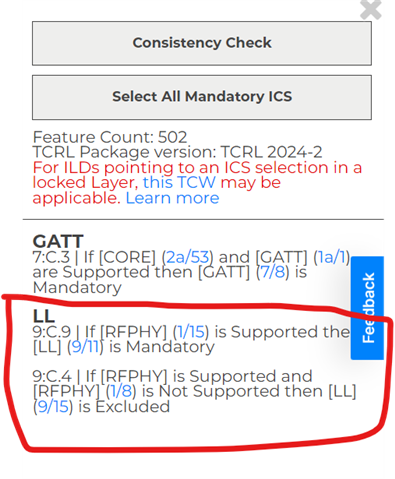Tool/software:
I'm working with a customer, who in turn is working with a test house that has raised some questions about the qualification of their product based on our device:
As discussed earlier today, I created the test plan for RF-PHY testing with transmitter, receiver and Power class 1 features. See attached test plan.
However, it appears the Host design may not be compatible with RF-PHY chip, there are two inconsistencies/Inter layer dependencies triggered between Link Layer and RF-PHY layer as highlighted below:
- TI Host QDID (196584 – based on CC2674R10) does not support power class 1 in Link Layer, while you are planning to support on the product, this led to the ILD: To resolve this, you either need to drop power class 1 in RF-PHY layer or get an alternative QDID from TI with Link Layer supporting power class 1.
- TI Host QDID supports LL 9/15 “Connection CTE response” feature which is tied to “Transmitting constant tone extensions” that’s not supported in RF-PHY layer, this led to another ILD: To resolve this ILD, you either need to support RF-PHY 1/8 “Transmitting constant tone extensions” feature or have TI create a subset to exclude LL 9/15 feature (This does not involve any cost, it can be simply done from their Bluetooth SIG account)
The GATT ILD has it’s waiver from SIG . The other ILDs must be resolved before we can submit the listing to Bluetooth SIG.

This is a bit beyond my level of expertise, and I'm not really sure what "Power Class 1" means. The customer design utilizes our CC2674R10 with an external RF power amplifier. I believe the resulting output power is in the range of ~20dBm to ~22dBm. I'm not sure if that is relevant or not.
Customer is asking TI:
- get an alternative QDID from TI with Link Layer supporting power class 1
- have TI create a subset to exclude LL 9/15 feature (This does not involve any cost, it can be simply done from their Bluetooth SIG account)
Assuming this is the correct way to proceed, is this something we are able to do?
Thanks,
Stuart


